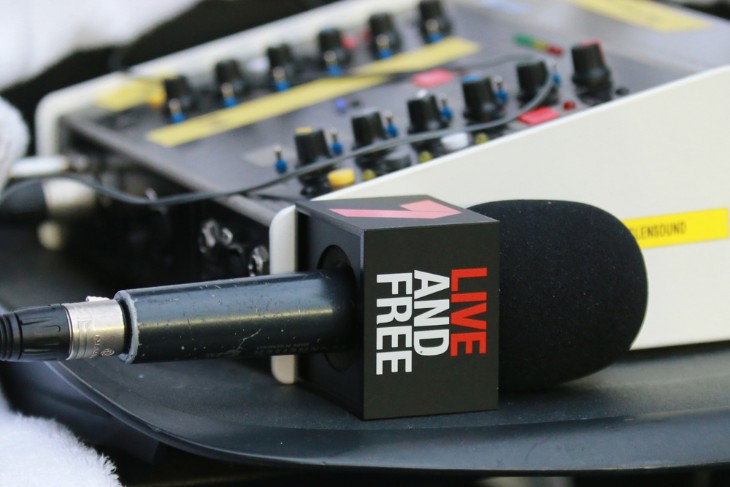- Pioneers of the Commentary Box: Early Voices
- The Golden Era: Commentators of the 20th Century
- From Field to Microphone: Former Players Turned Commentators
- The Art of Storytelling: Narrating Cricket's Tales
- The Wit and Wisdom: Memorable Quotes from Commentators
- The Voice of Authority: Expert Analysis
- Commentating Legends: Iconic Voices in Cricket
- Conclusion
Pioneers of the Commentary Box: Early Voices
In the early days of cricket, commentators were crucial for bringing the live action to fans unable to attend matches. Seated in simple wooden boxes, often former cricketers themselves, these pioneers described the unfolding games through vivid word pictures carried over the radio waves. Their articulate voices transported listeners to the very heart of the match.
The first cricket commentators had to rely solely on their eyesight and descriptive powers. Armed with just binoculars and their keen understanding of cricket, they delivered evocative accounts of matches. These early commentators added storytelling elements to their commentary, recounting anecdotes and details that made fans feel part of the experience. Their enthusiasm for cricket shone through, making even seemingly mundane moments come alive.
These pioneering radio broadcasters not only described the action but also educated the public on this rapidly growing sport. Their commentary made cricket accessible and exciting for the everyday listener. They played a pivotal role in laying the foundations for what would become an integral part of the cricket experience.
- One of the earliest known cricket commentators was Howard Marshall, who provided BBC radio commentary of matches starting in 1934. His unique style set the template for future broadcasters.
- Rex Alston was another prominent early cricket commentator known for his eloquent phrases like "yeoman service" to describe a batsman's steady innings.
- The broadcast of the first cricket Test match on radio in 1927 was a milestone that ushered in a new era of commentary.
The Golden Era: Commentators of the 20th Century
The 20th century saw the emergence of iconic cricket commentators that would leave an indelible impact on the sport. With the advent of television, these commentators now had a global platform, their voices beamed into homes around the world. Each had a distinctive style that captivated audiences.
Commentators like Richie Benaud brought a measured, analytical approach flavored with dry Aussie wit. His pithy catchphrase "marvelous!" summed up exciting cricket moments. England's Brian Johnston added mischievous humor and irrepressible laughter to his commentary. He built a joyful rapport with colleagues on-air. The poetic musings of John Arlott transported listeners to idyllic village greens with his nostalgic turns of phrase as matches unfolded.
This glittering array of 20th century cricket commentators didn't just describe matches; they defined eras in the sport. Fans developed deep attachments to their favorite voices. They became part of the fabric of the game and icons in their own right. Their trademark phrases and laughter have stood the test of time.
- John Arlott was famed for his verbal portraits of players like "Grovel" Greig that captured their essence.
- Richie Benaud's minimal commentary focused on letting the action speak for itself. His concise style was widely respected.
- Brian Johnston's irrepressible humor resulted in legendary on-air laugh-a-thons with other commentators.
From Field to Microphone: Former Players Turned Commentators
Many legendary cricketers found a second career behind the microphone as commentators. Their insights based on years of experience on the field gave their commentary a special credibility. However, not all former players made easy transitions into this very different role.
Some players struggled to adapt from being protagonists on the field to objective observers in the commentary box. Developing the ability to analyze matches and articulate thoughts clearly did not come naturally to all. But certain cricketers discovered they had an innate talent for commentary that matched their playing skills. Their perspectives enriched broadcasts, allowing them to connect with audiences in a new way.
Bringing these former players into commentary teams has helped many understand the game at a deeper strategic and technical level. Listening to their breakdowns of play provides a unique learning experience. Their voices preserve their legacy and love for cricket in a different form.
- Ian Chappell, known for his frank views as a player, maintained a similarly direct approach in the commentary box.
- Kapil Dev's charismatic presence as a player translated smoothly to his role as a Hindi commentator.
- Sunil Gavaskar dissected batting techniques with an expert eye honed from his prolific career.

The Art of Storytelling: Narrating Cricket's Tales
Cricket commentators have mastered the art of storytelling, weaving insightful and compelling narratives around matches. They paint multi-dimensional portraits of contests, enriched with history and context. Their tales transport us into pivotal moments from cricket's rich lore.
These storytellers help even non-cricket fans appreciate the significance of iconic moments and personalities. Their blend of fact, emotion and drama turns cricket into a saga for the ages. Commentators also enable fans to relive treasured memories through their nostalgic accounts. Their narratives build connections across generations.
Beyond the play-by-play, these narrators shape the way we remember the game. Their storytelling gifts cricket an added layer of cultural resonance and timelessness. Thanks to their tales, cricket is not just a scoreboard of runs and wickets but a never-ending epic.
- Tony Cozier's chronicles of West Indian cricket evoked the sense of community and identity built around the sport in that region.
- John Arlott's radio commentary of Botham's Ashes heroics in 1981 added to the magical aura surrounding that series.
- Christopher Martin-Jenkins wrote insightful essays on cricket that wove threads between past and present.
The Wit and Wisdom: Memorable Quotes from Commentators
Cricket commentary is peppered with moments of sparkling wit and insight that themselves find a permanent place in the game's lexicon. Pithy catchphrases, humorous quips and profound observations have become intrinsically attached to the most memorable passages of play.
Richie Benaud's greeting of "good morning everyone" at the start of a day's cricket is forever linked to countless memorable mornings of play over the years. Henry Blofeld's affectionate moniker for Queen Elizabeth II - "my dear old thing" displays the eccentric charm he brought to the microphone. Shane Warne's exclamation of "Geez, that's hit the roof!" after incredible deliveries captures exhilarating moments in the most Aussie way possible.
These commentary gems pithily encapsulate the essence of players, matches and moments for eternity. They require no context, such is their power. The wit and wisdom of commentators adorns the game, lightening discussions and bringing smiles to faces. Their humor and insight remain etched in our collective consciousness.
- Bill Lawry's cry of "Got him, yes!" signaled prized Aussie scalps with unrestrained excitement.
- David Lloyd's droll catchphrase "start the car!" when victory neared evoked a sense of joyful closure.
- Ian Bishop's vivid descriptions like "The ball's still going upstairs!" captured physics-defying deliveries.
The Voice of Authority: Expert Analysis
In an era of complex cricket analytics, commentators with true expertise provide invaluable guidance. These analytical commentators educate viewers on nuances beyond the basics. Their ability to predict play based on microscopic visual clues is unmatched.
Figures like Geoff Boycott break down technique and strategy with surgical precision. His forthright critiques explain why certain players succeed or struggle. Modern commentators like Isa Guha leverage the latest data to support their sharp observations. Their diagnosis of play helps crack the game open for devoted fans.
These learned voices lift commentary above surface description. Their perspective gives context to each delivery and decision. For aspiring cricketers, their mastery unlocks a textbook's worth of insight not visible to the naked eye. Expert analysis rewards close observation and opens our eyes to the game's hidden depths.
- Mike Atherton's astute tactical observations derive from his captaincy experience.
- Ian Bishop's breakdown of fast bowling techniques provides a masterclass for young pacers.
- Sanjay Manjrekar's ability to get inside the mind of Indian batsmen comes from shared experience.

Commentating Legends: Iconic Voices in Cricket
Certain commentators have risen to become legends of the craft, beloved for generations. Though gone, their voices continue to echo through the game's historic moments. Their distinctive styles and signature phrases endure as cultural touchstones.
Richie Benaud mastered cricket's complexities with an air of effortless class and insight. Blended with dry Aussie wit, his minimalist commentary rightly became the gold standard. England's John Arlott painted evocative word portraits that transported listeners to far-off grounds and gentler times. The Caribbean calm of Tony Cozier introduced the world to cricket's soul and passion.
These iconsvalued substance over style. They built deep connections with audiences through their warmth, humor and authority. The game was always the true star under their stewardship. The clarity and wisdom of their gaze into cricket's heart will be timeless sources of insight and joy.
- Henry Blofeld's plummy voice and propensity for puns made him a cult favorite for decades.
- Christopher Martin-Jenkins' essays conveyed both cricket's drama and poetry with eloquence.
- Alan McGilvray brought matches to life for a generation of Australians through vivid imagery.
Conclusion
Cricket commentators have left an indelible impact on how the sport is both seen and understood. They have enriched the game through storytelling, analysis and wit for more than a century. The greatest commentators become woven into the fabric of the matches they covered.
Their voices spark nostalgia, framing our memories of unforgettable moments and heroes. Their distinctive styles taught us cricket's rhythms and charms. They forged a personal connection with fans that spanned generations. Cricket still echoes with their laughter, catchphrases and wisdom.
The commentator's box has evolved from basic enclosures into high-tech nerve centers. But it remains a space where cricket's soul is chronicled and preserved forever. Commentary is so much more than words; it is the heartbeat of cricket's unfolding story.
For more information:
- UK's Role in the Evolution of Cricket Rules
- Memorable Moments in UK Cricket History
- Famous Cricket Grounds in England and Wales
- Youth Talent: Rising Stars of English Cricket


